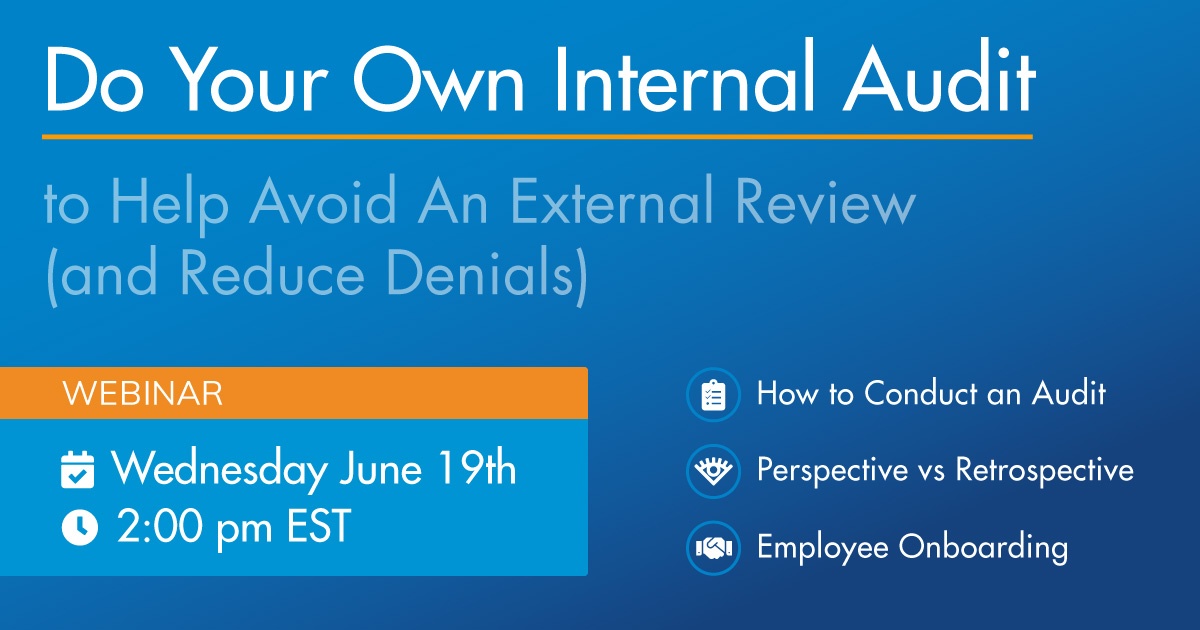4 Must-have Data Points for Dispatch-Billing Alignment and Maximum Reimbursement
Do Your Own Internal Audit to Avoid External Review (and Reduce Denials)
(5 min read) Lately it feels like ambulance providers are getting yelled at from Medicare and the OIG at every turn – “Medicare Paid Twice for Ambulance Services…” or “Inappropriate Payments and Questionable Billing for Medicare Part B Transports” or “DOJ Aggressively Investigates ALS Transport Billing
Was this information valuable?

(5 min read) Lately it feels like ambulance providers are getting yelled at from Medicare and the OIG at every turn – “Medicare Paid Twice for Ambulance Services…” or
“Inappropriate Payments and Questionable Billing for Medicare Part B Transports” or
“DOJ Aggressively Investigates ALS Transport Billing.” The noise has brought continued scrutiny of ambulance services including the advent of TPE audits. The volume further intensifies as commercial insurers have increased their denials in some areas.
So, if providers face tight oversight from regulators and there are significant denials, what can be done to correct the problems and improve the rate of denial? The answer is simple: establish an internal audit program! This is not a difficult or overly time-consuming process; a bit of organization and a good methodology will net valuable feedback to improve compliance and save denials.
Prospective audits verses Retrospective audits
The starting point is to decide what type of audit to perform. A prospective audit is a review of claims and billing prior to submitting to a payer. This is good approach for supervisors to take of new hires or to perform quality assurance review for existing staff.
“The prospective audit will catch documentation problems and spotlight billing errors which may need simple correction or additional staff education.”
A retrospective audit is for reviewing claims post-payment. This method serves as a check on payments to assure the claim was processed correctly and no under or overpayments exist. It is easier to identify processing problems with a post-payment audit. Perhaps the correct modifier was not applied to a claim because that modifier was not set up correctly in the billing software. Or the claim that appeared to go smoothly through the clearinghouse had a problem when it got to the payer. Or, a medically unnecessary transport slipped through seeking reimbursement because a biller forgot to place a “GY” denial request on the claim.
Selecting and Reviewing Claims
Reviewers will need a tool to select claims for review. The OIG has a free program called “RAT-STATS” which can be downloaded (the icon is a picture of a rat to assure the auditor knows they are using the right tool). Per the OIG, “RAT-STATS is a free statistical software package that providers can download to assist in a claims review. The package, created by OIG in the late 1970s, is also the primary statistical tool for OIG's Office of Audit Services.”
Once RAT-STATS is downloaded, create a simple spreadsheet with a list of all the possible claims for review. Next, select “Single Stage Random Number.” In the “Sequential Order” section, enter the number of claims needed for the random selection. For example, the plan may be to review twenty claims for medical necessity; enter the number 20 in the Sequential Order section. After that step look to the “Sampling Frame” section and enter the low number line from the spreadsheet and the highest numbered line from the spreadsheet (i.e., the list of claims may start on line 5 and end on line 2,855; 5 is the lowest number and 2,855 is the highest). The final step is to tell the program how to display the list of random numbers – printed, on an Excel sheet, etc. The product will be a random list that will show line 8 is the first claim for review, line 67 is the next claim, line 159 is third claim for review, line 433 is following claim, etc. The use of RAT-STATS ensures no cherry-picking of claims for audit.
The next topic to address is who will perform the review. In the perfect world, there would be an internal audit person or team, or billing manager or supervisor would do the review. Alas, we do not operate in the perfect world. There is never enough time. Therefore, consider rotating through billing staff to do audits. This month could be biller #1’s turn, next month biller #2 would take a turn. This creates a good educational environment for all staff. What about self-auditing? Self-auditing may defeat the purpose of catching errors. It is best to have someone other than the person who created the claim audit the work.
Lastly, you may be wondering how many claims should be reviewed. The OIG has discussed this topic, but the recommendations were for physicians. While there is no specific guidance for ambulance services, the physician guidance offers a good path to follow. For physicians, it is suggested that five or more medical records per government payer receive an internal review. When looking prospectively at claims, ten trips per biller is a good target. In the early days of new hire billing, organizations often opt to perform a total review of all claims prepared as the biller moves along the learning curve.

5 tips for making sure your audit process is successful
- Timing of the review is important – billers and management need consistent feedback to assure errors are eliminated or denials reduced. Depending on the volume of trips processed by the billing group, the audit program may choose to audit a batch of claims weekly. Auditing monthly or quarterly is appropriate as well. The key is consistency. Field personnel and billing staff need routine communication on the quality of their work to maximize revenue integrity.
- Regulated payers are most susceptible to outside audit. Therefore, they are a good place to focus audit attention. Look at Medicare and Medicaid claims as well as regulated payers like Medicare Advantage and Medicaid managed care plans. Remember to include facility billing in the review plan. Facilities are responsible for certain payments under the patient’s Part A benefits. To maintain compliance, Part A billing must be done appropriately.
- All types of transports need audit – emergencies (and their upcoding concerns), non-emergencies (with special emphasis on medical necessity), and repetitive transports. Handling each type of transport could be rotated on a monthly or quarterly basis as time allows.
- Don’t overlook the audit of denials. Investigating why claims deny and correcting any problems go a long way to improving cash flow. Remember to set benchmarks for staff accuracy. The benchmark may be different for a new hire versus a seasoned biller.
- Finally, the rules are critical! If a problem is discovered post-payment, it must be addressed promptly. The clock is ticking on the time available to refund an overpayment. Ensure that Medicare and Medicaid’s rules are followed.
For more on internal auditing with charts to help develop a good internal process, don’t miss the upcoming webinar on How to Do Your Own Internal Audit on June 19th!
Related Posts
Podcast: 4 Ways ePCR Software Can Relieve EMS’ Biggest Headaches
Black Book Research Ranks ZOLL Billing the #1 Insurance Discovery Solution
ZOLL Pulse Blog
Subscribe to our blog and receive quality content that makes your job as an EMS & fire, hospital, or AR professional easier.
ZOLL Pulse Blog
Subscribe to our blog and receive quality content that makes your job as an EMS, fire, hospital, or AR professional easier.






